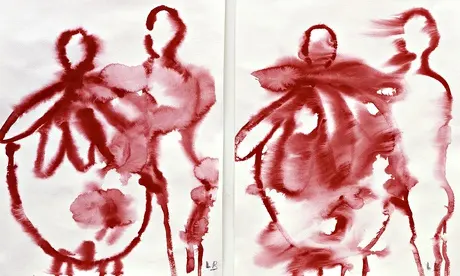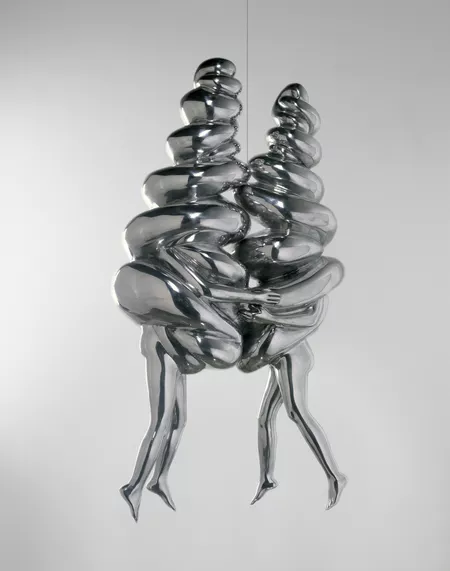@mothercain. “i Owe U A Black Eye And Two Kisses” Twitter, 14 Jul 2021.




@mothercain. “i owe u a black eye and two kisses” twitter, 14 jul 2021.
More Posts from Dreamsp023 and Others
Aunque esta película me guste, me traen malos recuerdos de un compañero que tuve que estaba obsesionado con la memoria y ponía siempre esta película de ejemplo. Que salí de ahí conociendo una muy buena película de animación, pero también salí de ahí con traumas :’)
Esta línea lo ejemplifica muy bien. Enseñanza de esto, no hagáis trabajos con gente que aunque en un principio parezca que tengan una forma de pensar interesante nada garantiza que salgas de ahí bien parado. Pd: también por él conocí la película persona, que es una muy muy buena película, así que tampoco fue tan malo conocerlo.


Professor Remus Lupin on platform 9 ¾ before he boards the train to Hogwarts.
Lupin is one of my absolute favorite HP characters, so it was about time I drew him!<3
severus snape and the ongoing theme of “insufficient masculinity” (aka homophobia/transphobia)
snape is introduced at a young age wearing a “women’s blouse”, which petunia uses to mock him
snape, when appearing to neville as a boggart, wears neville’s grandmother’s clothing when neville uses riddikilus on him
during “snape’s worst memory”, james turns snape (who he sees as a potential romantic rival) upside down and strips him/humiliates him in an attempt to impress lily, and after snape yells at lily and calls her a mudblood, lily covers up her (justifiably) hurt feelings by commenting on his dirty underwear
snape’s patronus, confirmed by jkr to be a symbol of “true love, love everlasting”, unlike james’ stag, mirrors lily’s patronus by being a doe (which much of the fandom considers to be a sign of obsession, despite never levelling the same accusations against tonks’ wolf patronus mirroring remus’)
most, if not all, of the significantly positive/grounding forces in severus’ life are women (eileen, lily, narcissa, mcgonagall)
feel free to add more if u can think of any
My problem with Lily and James being seen as a super couple has nothing to do with Severus Snape but rather with the fact that when we look at the relationship between James and Lily through a feminist lens, it’s hard not to notice some pretty glaring issues that go beyond just whether or not they’re an “OTP” couple. Sure, on the surface it might seem like a story of two people finding love amid all the chaos, but scratch beneath the surface and you see a whole lot more about toxic masculinity, objectification, and the erasure of a woman’s agency. James is celebrated as this charming, rebellious “bad boy” with a roguish smile, while Lily gets stuck playing the role of the sacrificial, moral compass woman—someone who exists largely to balance out and even redeem the male narrative. And honestly, that’s a problem.
James is shown as this complex, active character who’s constantly surrounded by friends, enemies, and drama. His life is dynamic and full of choices—even if those choices sometimes involve manipulation and deceit. He’s the kind of guy who can easily slip out of confinement with his Invisibility Cloak, leaving Lily behind in a narrative that, over time, turns her into a background figure. This dynamic isn’t accidental; it’s reflective of how our culture often values male agency over female independence. Lily, on the other hand, is repeatedly reduced to her relationships with the men around her. Instead of being a person with her own dreams, opinions, and friendships, she becomes a symbol—a kind of emotional barometer for how “good” or “bad” a man is. Her character is used to validate the actions of others, which means her individuality gets smothered under the weight of a trope that’s all too common in literature: the idea that a woman’s worth is measured by her ability to tame or save a troubled man.
This isn’t just about a lack of depth in Lily’s character; it’s also about how her portrayal reinforces harmful gender norms. Lily is depicted as this kind of sacrificial mother figure—a person whose primary virtue is her selflessness, her willingness to suffer and sacrifice for the sake of others. While selflessness is often celebrated in women, it’s a double-edged sword when that selflessness is the only thing we see. Instead of having her own narrative, her role is defined by how much she gives up, not by what she contributes or the inner life she leads. And it’s not just a narrative oversight—it’s a reflection of a broader cultural pattern where women are expected to be nurturing, supportive, and ultimately secondary to the male characters who drive the action.
What’s even more frustrating is how Lily’s isolation is used to further the narrative of James’s redemption. Over time, we see Lily’s network of friends and her connections outside of James gradually disappear. It’s almost as if, once she falls in love, her entire world is meant to shrink around that relationship. And here’s where the feminist critique really kicks in: this isn’t a realistic depiction of a balanced, healthy relationship—it’s a story that subtly suggests that a woman’s fulfillment comes from being dependent on one man and his circle, rather than cultivating her own identity. Meanwhile, James continues to be portrayed as this larger-than-life figure who’s got a whole world beyond his romantic entanglement, a world filled with vibrant interactions, rivalries, and a legacy that extends beyond his relationship with Lily.
Another point worth mentioning is the way in which the narrative seems to excuse James’s less-than-stellar behavior. His manipulation, his lying, and his willingness to trick Lily into situations that serve his own interests are brushed off as quirks of a “bad boy” persona—a kind of charm that, in the end, makes him redeemable because Lily’s love is supposed to “tame” him. This kind of storytelling not only normalizes toxic masculinity but also puts an unfair burden on Lily. It’s like saying, “Look how amazing you are, you’re the only one who can fix him!” That’s a dangerous message because it implies that women are responsible for managing or even reforming male behavior, rather than holding men accountable for their own actions.
The imbalance in their character development is glaringly obvious when you compare how much more we learn about James versus how little we know about Lily. James is given room to be flawed, to grow, and to be complicated. His friendships, his rivalries, and even his mistakes are all part of what makes him a rounded character. Lily, however, is often just a name, a face in the background who exists mainly to serve as a counterpoint to James’s narrative. Her inner life, her ambitions, and her struggles are rarely explored in any meaningful way, leaving her as a one-dimensional character whose only real purpose is to highlight the moral journey of the man she loves.
It’s also important to recognize how this kind of narrative plays into broader cultural ideas about gender. When literature consistently portrays women as the quiet, isolated figures who are only valuable in relation to the men around them, it sends a message about what is expected of real-life women. It suggests that a woman’s worth is determined by how much she sacrifices or how well she can support a man, rather than by her own achievements or personality. This isn’t just a harmless trope—it contributes to a societal mindset that limits women’s potential and reinforces gender inequality. The way Lily is written reflects a kind of “tamed” femininity that’s supposed to be passive, supportive, and ultimately secondary to the active, adventurous masculinity that James represents.
At the heart of the issue is the lack of balance in their relationship as depicted in the texts. The idea that Lily “fell for” a man who was clearly not a paragon of virtue is problematic, but what’s even more problematic is how her role in the relationship is so narrowly defined. Rather than being seen as an independent character who makes choices and has her own voice, she is constantly portrayed as someone whose existence is meant to validate the male experience. Even when the texts mention that Lily had her own issues—like hating James at times or suffering because of the way their relationship unfolded—it’s always in a way that underlines her weakness compared to James’s dynamic, active presence.
Looking at the broader picture, it’s clear that this isn’t just about one fictional couple—it’s a reflection of how gender dynamics have long been skewed in literature. Male characters are given the freedom to be complex, flawed, and full of life, while female characters are often stuck in roles that don’t allow them to be fully realized. This isn’t to say that every story with a sacrificial female character is inherently bad, but it does mean that when a character like Lily is reduced to a mere symbol—a moral compass or a measure of male worth—it’s time to ask why and what that says about the society that produced that narrative.
So, what’s the way forward? For one, we need to start reimagining these relationships in a way that allows both partners to be fully fleshed out. Lily deserves to be more than just a side character or a moral benchmark; she should have her own narrative, her own dreams, and her own agency. And as much as it might be appealing to think of James as this redeemable rebel, it’s equally important to hold him accountable for the ways in which his behavior perpetuates harmful stereotypes about masculinity. A healthier narrative would be one in which both characters grow together, where mutual respect and equal agency are at the core of their relationship.
In the end, the story of James and Lily, as it stands, is a reminder of how deeply ingrained gender norms can shape the stories we tell. It’s a cautionary tale about the dangers of allowing toxic masculinity to go unchecked and of confining women to roles that don’t do justice to their full humanity. For anyone who’s ever felt frustrated by these imbalances, there’s hope in the idea of re-writing these narratives—of pushing for stories where both men and women are seen as complete, complex individuals. And really, that’s what literature should strive for: a reflection of the messy, beautiful, and often complicated reality of human relationships, where no one is just there to serve as a prop in someone else’s story.
Ultimately, if we can start imagining a world where characters like Lily aren’t just defined by their relationships to men, where their voices and stories are given as much weight as those of their male counterparts, then we can begin to chip away at the outdated tropes that have held us back for so long. It’s about time we celebrated the full spectrum of human experience—and that means giving women like Lily the space to shine on their own terms, without being constantly overshadowed by a “bad boy” narrative that has little to say about their true selves.


Variety (1983), dir. Bette Gordon


Black Phillip, I conjure thee to speak to me.


















Louise Burgeoise
-
 fridgesimp liked this · 1 week ago
fridgesimp liked this · 1 week ago -
 chico3030 liked this · 1 week ago
chico3030 liked this · 1 week ago -
 ang33lheart liked this · 1 week ago
ang33lheart liked this · 1 week ago -
 peoplevsbirds liked this · 2 weeks ago
peoplevsbirds liked this · 2 weeks ago -
 z0mbi3gir1 liked this · 2 weeks ago
z0mbi3gir1 liked this · 2 weeks ago -
 bitchadonas liked this · 2 weeks ago
bitchadonas liked this · 2 weeks ago -
 annabelles-dream liked this · 2 weeks ago
annabelles-dream liked this · 2 weeks ago -
 athenalikethegoddess liked this · 2 weeks ago
athenalikethegoddess liked this · 2 weeks ago -
 carnuatus reblogged this · 3 weeks ago
carnuatus reblogged this · 3 weeks ago -
 1-800-l0v3rgrl reblogged this · 3 weeks ago
1-800-l0v3rgrl reblogged this · 3 weeks ago -
 1-800-l0v3rgrl liked this · 3 weeks ago
1-800-l0v3rgrl liked this · 3 weeks ago -
 man1cmuse liked this · 3 weeks ago
man1cmuse liked this · 3 weeks ago -
 maddymoomoo reblogged this · 3 weeks ago
maddymoomoo reblogged this · 3 weeks ago -
 maddymoomoo liked this · 3 weeks ago
maddymoomoo liked this · 3 weeks ago -
 deepwoodsworship reblogged this · 3 weeks ago
deepwoodsworship reblogged this · 3 weeks ago -
 cloud-kisser reblogged this · 3 weeks ago
cloud-kisser reblogged this · 3 weeks ago -
 cloud-kisser liked this · 3 weeks ago
cloud-kisser liked this · 3 weeks ago -
 mlllca reblogged this · 3 weeks ago
mlllca reblogged this · 3 weeks ago -
 phoebewinchester727 liked this · 4 weeks ago
phoebewinchester727 liked this · 4 weeks ago -
 sadlittlecountess liked this · 4 weeks ago
sadlittlecountess liked this · 4 weeks ago -
 blackbutterflies7 liked this · 1 month ago
blackbutterflies7 liked this · 1 month ago -
 alittleannihilati0n liked this · 1 month ago
alittleannihilati0n liked this · 1 month ago -
 mychemvampires reblogged this · 1 month ago
mychemvampires reblogged this · 1 month ago -
 cathlyana liked this · 1 month ago
cathlyana liked this · 1 month ago -
 frankoceanlistener288 liked this · 1 month ago
frankoceanlistener288 liked this · 1 month ago -
 brokenglassb1tch liked this · 1 month ago
brokenglassb1tch liked this · 1 month ago -
 spicymargarita reblogged this · 1 month ago
spicymargarita reblogged this · 1 month ago -
 amethyst-crowns liked this · 1 month ago
amethyst-crowns liked this · 1 month ago -
 thorniest-rose liked this · 1 month ago
thorniest-rose liked this · 1 month ago -
 rabidaly reblogged this · 1 month ago
rabidaly reblogged this · 1 month ago -
 furiousfinnstan liked this · 1 month ago
furiousfinnstan liked this · 1 month ago -
 spcecowboyyy reblogged this · 1 month ago
spcecowboyyy reblogged this · 1 month ago -
 melll0dy liked this · 1 month ago
melll0dy liked this · 1 month ago -
 nuu-wa reblogged this · 1 month ago
nuu-wa reblogged this · 1 month ago -
 likesblogifihadone reblogged this · 1 month ago
likesblogifihadone reblogged this · 1 month ago -
 hideout-myself reblogged this · 1 month ago
hideout-myself reblogged this · 1 month ago -
 r0tt3n-ch3rry reblogged this · 1 month ago
r0tt3n-ch3rry reblogged this · 1 month ago -
 rosetintedfemme reblogged this · 1 month ago
rosetintedfemme reblogged this · 1 month ago -
 rosetintedfemme liked this · 1 month ago
rosetintedfemme liked this · 1 month ago -
 watchonlinefreeengsub reblogged this · 1 month ago
watchonlinefreeengsub reblogged this · 1 month ago -
 betweenthefeelingandthesound liked this · 1 month ago
betweenthefeelingandthesound liked this · 1 month ago -
 cowgirlpsychic liked this · 1 month ago
cowgirlpsychic liked this · 1 month ago -
 lovesick--kitty liked this · 1 month ago
lovesick--kitty liked this · 1 month ago -
 motochiri reblogged this · 1 month ago
motochiri reblogged this · 1 month ago -
 bigfettuccine liked this · 1 month ago
bigfettuccine liked this · 1 month ago -
 izkuku liked this · 1 month ago
izkuku liked this · 1 month ago -
 spcecowboyyy liked this · 1 month ago
spcecowboyyy liked this · 1 month ago -
 sapphroses reblogged this · 1 month ago
sapphroses reblogged this · 1 month ago

9w8 sx INTP | 21 | Spanish Here I talk about tarot and sometimes I do movie reviews.
65 posts

